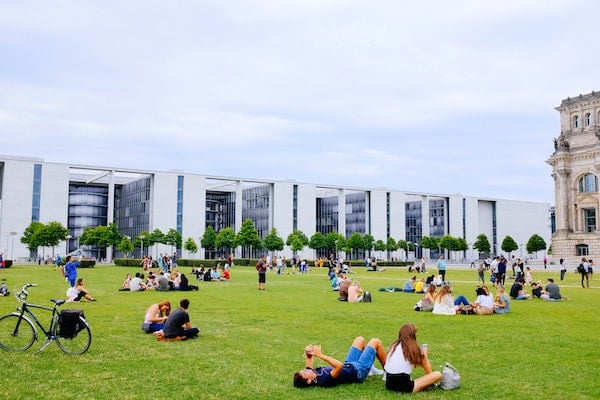Published on
Better Serving the Underserved Through Personalization

What has been personalized for you lately? Maybe marketing, medicine, navigation or purchase recommendations? Data about your ZIP code, browsing history, answers you gave to profile questions and viewing behaviors—even the weather (complete with the pollen count you are experiencing) can color personalized experiences. Right now, we probably know more about online buying patterns than about human learning, but it is reasonable to think we can leverage learning science to determine that variables and data points that inform and personalize learning.
In fact, personalizing learning programs, courses and content could help address the persistent inequities that limit the benefits of education for so many. Higher education continues to struggle to serve many populations. (ACE’s Higher Education Today has a blog series examining a dozen categories of underserved populations). To fully unlock the talent and skills of all learners regardless of their abilities, identities, differences and preparation, we should commit to personalized learning.
Personalized Program and Pathway Designs Can Help Students Target Their Goals
Highly personalized learning programs aren’t that far into the future. Learners will follow automatically curated learning pathways aligned with specific goals, geographically in-demand skills and prior learning. As the labor market demand for skills rises and falls, these experiences and recommendations will change dynamically, requiring a high degree of interoperability between providers, employers. And The Open Skills Network is laying the foundation for that interoperable future right now.
We don’t have to wait for the future to begin designing automated personalized programming. Empathetically designing educational programming for underserved learners can start right now with stackable credentials, pathway choices and on- and off-ramps. These serve learners who have non-traditional goals or who need quick financial wins from their education. Personalized social and emotional learning support and early successes can encourage persistence and help struggling learners sustain their commitment to their work.
Personalizing Course Options Can Optimize Value
Early work on personalization often has involved diagnostic assessments that point students to areas of focus and competency-based education. This model allows learners to be assessed when they are ready. The future promises customized non-linear learning based on a vast array of variables such as time (or bandwidth), efficient scheduling and the availability of partners for group work. All these variables will help remove friction and points of failure for all learners—even those caused by poverty, systemic prejudice and learning or confidence gaps all too common among underserved learners.
We need not wait for the technology behind such sophisticated personalized courses to make a difference for these learners. A wrong answer on a quiz can indicate a student has forgotten a foundational math skill, and the rejoinder can offer a link to a refresher. Course designs can remind students they need to understand logarithms to work with gas laws or provide tutorials on passive and active voice before a project on crisis management in a business communication course. Inserting these foundational skills optionally right into the course normalizes the need for help and promotes momentum, even when helpers like instructors and peers aren’t immediately available.
Personalized Content Can Be a Powerful Tool to Promote Success
As courses become more modularized and content can be tagged and tracked, we’ll be able to surface content that statistically matches a learner’s success profile. Learners can start with preferred content types or receive a recommendation about what has driven past success—for them or learners like them. The system will learn more about a student with each action they take, so the recommendations will continuously improve.
Of course, there is much we can do now to promote choice and allow learners to benefit from personalization. If students whose living arrangements offer no dedicated study space can select from multiple modalities, they can keep learning through audio on a long commute or opt for short videos when reading text is impractical. Multiple modalities can also powerfully improve accessibility. For trailblazers who are the first in their family to go to college or who are entering a field in which they will have few colleagues of their gender or ethnicity, belonging and representation may powerfully impact persistence. Being represented in learning materials or learning from instructor whose approach to a topic resonates with your background can be potent contributors to success.
Learning science and common sense show that reading and listening comprehension improve in familiar contexts, yet most learning content reflects majority culture and mainstream sources. Offering a choice of examples, cases and exercises that reflect diverse experiences, especially those more common among underserved learners, may increase comprehension and learning efficiency. As is so often the case, diversifying content will also benefit more typical learners, as they may find their horizons broadened by seeing the concepts through a new lens.
As with anything so new, we must test our assumptions and implement new strategies with care. Concerns have risen about digital redlining, so we must make sure the statistical patterns we use make sense. Associating a particular learning outcome or activity with height, for example, may accidentally favor a particular ethnic group or gender. Also, offering multiple content options will require the creation or curation of a greater amount of content, and there time and expense are important factors. However, collecting data ethically and analyzing our approaches can help us improve our practices.
Although the future of personalized learning is still being developed, we can begin to reap the rewards now. By adding personalized elements to current learning experiences and analyzing what works, we can better understand the needs of our underserved populations. In the end, if the programs, courses and content have been personalized to address their needs, perhaps we will reach a point where we can say these learners are no longer underserved.
Disclaimer: Embedded links in articles don’t represent author endorsement, but aim to provide readers with additional context and service.



